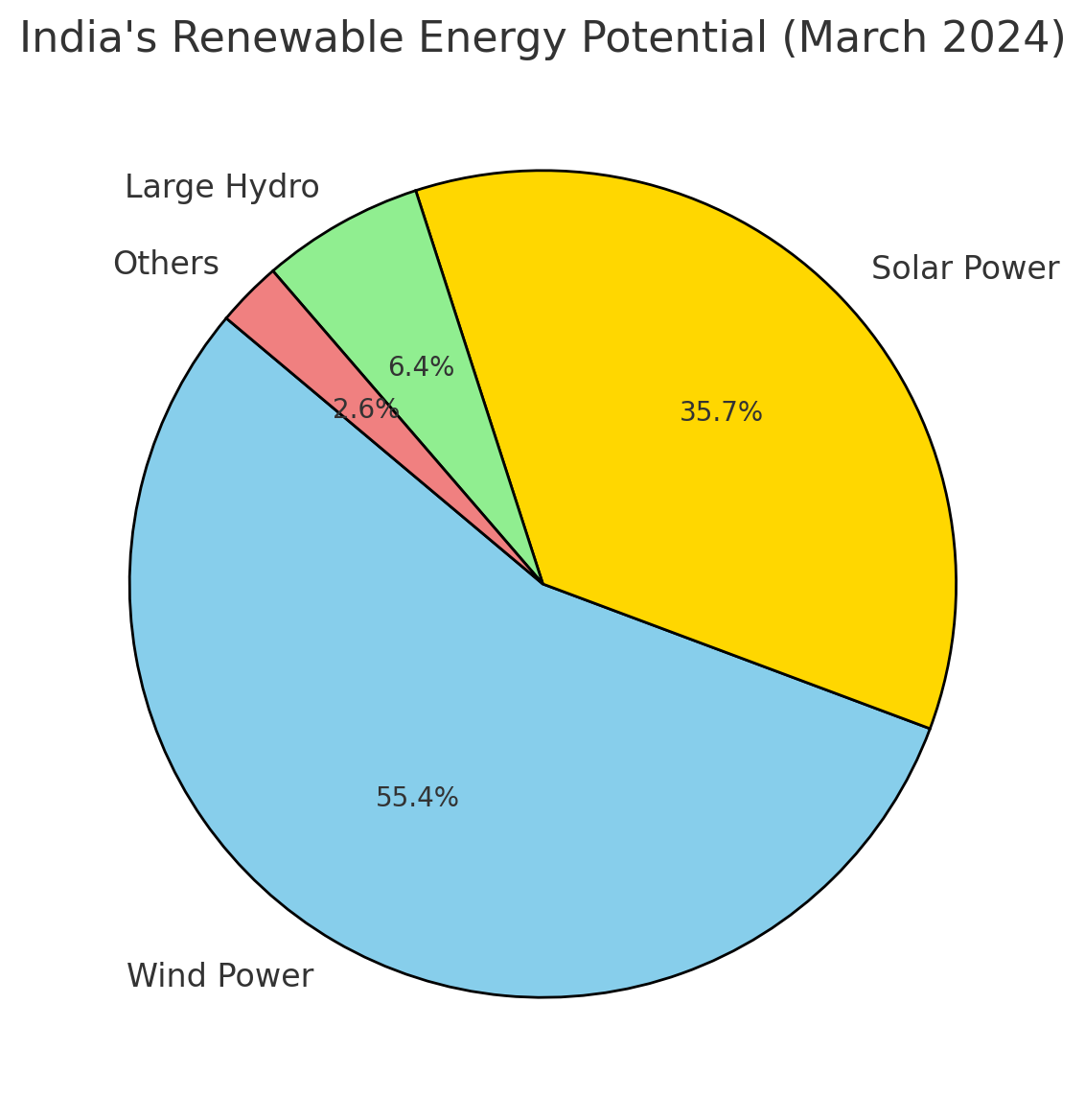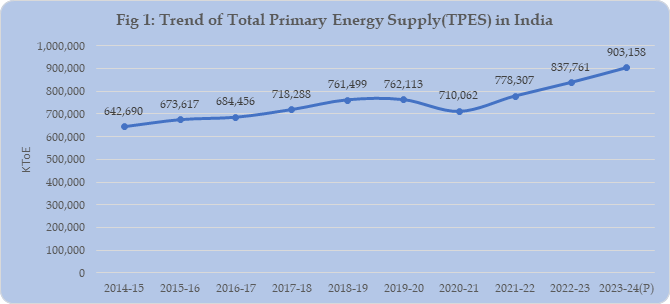Facts for UPSC Mains
Energy Statistics India 2025
- 02 Apr 2025
- 3 min read
Why in News?
The National Statistics Office (NSO) has released its annual Energy Statistics India 2025 report providing key data on energy reserves, capacity, production, and consumption across different energy sources.
What are the Key Highlights of Energy Statistics India 2025 Report?
- Energy Supply and Consumption Trends: India’s Total Primary Energy Supply (TPES) grew by 7.8% in 2023-24 despite global uncertainties. TPES is a country's total available energy, including domestic production and imports, exported energy (subtracted off) and international transport use.
- Per capita energy consumption increased from 14,682 MegaJoules (MJ) (2014-15) to 18,410 MJ (2023-24), with a CAGR (Compound Annual Growth Rate) of 2.55%, indicating better energy access and improved living standards.
- The industrial sector is India's largest energy consumer, with demand rising from 2.42 lakh KToE in 2014-15 to 3.12 lakh KToE in 2023-24.
- Renewable Energy Growth: India’s renewable energy potential stands at around 21 lakh MW, with wind power (55%) as the largest contributor, followed by solar and large hydropower projects.

- India's installed renewable electricity capacity grew from 81,000 MW in 2015 to around 2 lakh MW in 2024, while electricity generation from renewables rose from 2 lakh GWh (2014–15) to 3.7 lakh GWh (2023–24).
- State-wise Renewable Energy Statistics:
- Rajasthan (20.3%), Maharashtra (11.8%), Gujarat (10.5%), and Karnataka (9.8%) accounts for over 50% of the total renewable energy potential.
What Measures is India Taking to Meet Its Rising Energy Demand?Click Here to Read: India’s Measures to Meet its Energy Needs |
What are India's Key initiatives for Sustainable Energy Transition?
UPSC Civil Services Examination, Previous Year Questions (PYQs)
Prelims:
Q. Which one of the following is a purpose of ‘UDAY’, a scheme of the Government? (2016)
(a) Providing technical and financial assistance to start-up entrepreneurs in the field of renewable sources of energy
(b) Providing electricity to every household in the country by 2018
(c) Replacing the coal-based power plants with natural gas, nuclear, solar, wind and tidal power plants over a period of time
(d) Providing for financial turnaround and revival of power distribution companies
Ans: (d)
Mains:
Q. Write a note on India’s green energy corridor to alleviate the problem of conventional energy.(2013)





